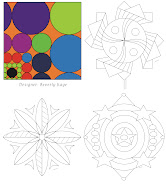This seems to be an odd question, given its 2014 and iPads infiltrated our society back in 2010. However, I still believe, its a good question.
Technically it’s a rectangular screen with finger touch sensitivity. It can connect to the world wide web via a wifi (wireless router), or in some cases via the cellar mobile network. It has two cameras (front and back), speakers and a microphone all inbuilt into the screen. It comes with a base set of applications or programmes - called ‘apps’. Apps can be purchased and loaded onto the screen via an online store. Apps are used to access and create digital information. Many apps are free but contain advertising. More specialised and ad-free apps are purchased relatively cheaply.
Given all these technical capabilities, the iPad enables us to connect to almost anyone, anywhere who has a regular phone, mobile phone, computer or ipad. It enabled me to send instant photos to the children of Manaia Kindergarten (New Zealand) from the heart of Kruger National Park (South Africa) - while tracking an elephant. It has enabled me to find my way through a rural township in South Africa that had not street lights. Its capabilities seem almost endless.
Apple, the company that designed, created and brought the iPad into our homes describes the iPad as its "most advanced technology in a magical and revolutionary device”
Were they right?
If we are to accept the iPad into our lives, we must endeavour not to be trapped in the rectangular screen - but to dream big, explore widely, and embrace the magic.
Other posts of interest.




















